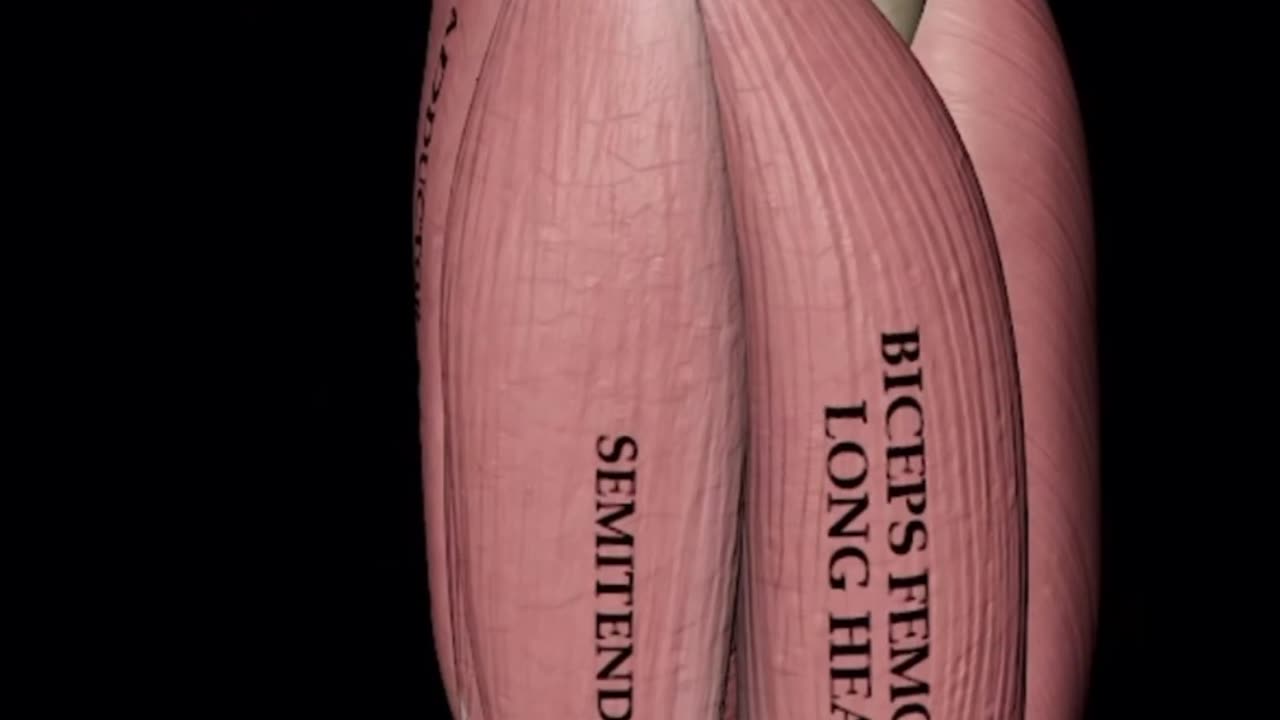Premium Only Content

Piriformis muscle
Piriformis is a muscle of the gluteal region which lies deep to the gluteus maximus. Piriformis belongs to a group of six short external rotators of the hip , i.e. gemellus superior, obturator internus, gemellus inferior, quadratus femoris, obturator externus. Attaching to the sacrum on one end and the greater trochanter on the other one, this muscle is reponsible for stabilising the hip joint and moving the thigh in various directions.
This is a flat pyramid-shaped muscle that arises from the anterior surface of the sacrum, between the sacral foramina. It passes laterally to exit the bony pelvis through the greater sciatic foramen, often attaching to the gluteal surface of the ilium, close to the posterior inferior iliac spine. It inserts onto the apex of the greater trochanter, posterosuperior to the insertion site of the conjoined tendon of gemellus superior, obturator internus and gemellus inferior.
The muscle divides the greater sciatic foramen into two foramina (suprapiriform and infrapiriform). The superior gluteal artery and nerve (L4-S1) leave the pelvis through the suprapiriform foramen. The sciatic nerve, inferior gluteal nerve (L5-S2) and artery, posterior femoral cutaneous nerve (S1-S3) and the nerve to quadratus femoris (L4-S1) leave the pelvis through the infrapiriform foramen. The pudendal nerve (S2-4) also leaves the pelvis through the infrapiriform foramen, wraps around the sacrospinous ligament, and re-enters the pelvis by passing back into the lesser sciatic foramen. After re-entering the pelvis, it is joined by the internal pudendal artery and vein. The gluteus medius and minimus are medial rotators, and hence oppose the action of the lateral rotators.
-
 49:35
49:35
Donald Trump Jr.
4 hours agoA New Golden Age: Countdown to Inauguration Day | TRIGGERED Ep.202
40.3K58 -
 1:14:34
1:14:34
Michael Franzese
3 hours agoWhat's Behind Biden's Shocking Death Row Pardons?
16.9K11 -

Tundra Tactical
1 hour agoThe Best Tundra Clips from 2024 Part 1.
401 -
 LIVE
LIVE
Sarah Westall
2 hours agoDying to Be Thin: Ozempic & Obesity, Shedding Massive Weight Safely Using GLP-1 Receptors, Dr. Kazer
406 watching -
 LIVE
LIVE
LFA TV
23 hours agoThe Resistance Is Gone | Trumpet Daily 12.26.24 7PM EST
283 watching -
 LIVE
LIVE
theDaily302
10 hours agoThe Daily 302- Tim Ballard
245 watching -
 13:22
13:22
Stephen Gardner
4 hours ago🔥You'll NEVER Believe what Trump wants NOW!!
50K148 -
 54:56
54:56
Digital Social Hour
1 day ago $6.19 earnedDOGE, Deep State, Drones & Charlie Kirk | Donald Trump Jr.
22.6K -
 DVR
DVR
The Trish Regan Show
5 hours agoTrump‘s FCC Targets Disney CEO Bob Iger Over ABC News Alleged Misconduct
31.8K20 -
 1:48:19
1:48:19
The Quartering
6 hours agoElon Calls White People Dumb, Vivek Calls American's Lazy & Why Modern Christmas Movies Suck!
105K77